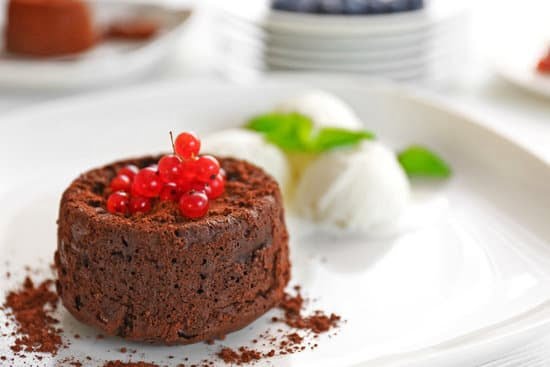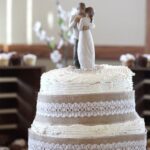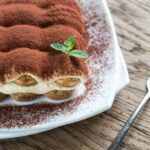When it comes to creating a beautifully decorated cake, proper storage before decorating is essential. Many aspiring bakers and decorators often wonder, “How long can you refrigerate cake before decorating?” In this article, we will address the importance of proper cake storage and debunk common concerns and misconceptions surrounding refrigerating cakes before the decorating process begins.
Properly refrigerating a cake before decorating is crucial for several reasons. Firstly, it helps preserve the freshness and moistness of the cake. Refrigeration locks in the moisture, ensuring that your cake stays deliciously moist even after being stored for a certain period. Secondly, refrigeration plays a pivotal role in preventing spoilage and mold formation. By keeping the cake at a lower temperature, bacteria growth slows down significantly, prolonging its shelf life.
It is important to consider various factors when determining how long you should refrigerate your cake before decorating. Different types of cakes may require different durations of refrigeration based on their ingredients, fillings, frosting, and overall structure.
By understanding these factors and following specific guidelines for each cake type, you can ensure that your cakes are properly stored without compromising their texture or taste. Be sure to keep reading as we delve into specific recommendations for refrigerating different kinds of cakes in the sections to follow.
Why Refrigeration is Recommended
Refrigeration is recommended for cakes before decorating due to its ability to preserve freshness and moistness. When a cake is left at room temperature, it becomes more susceptible to spoilage and mold formation. By refrigerating the cake, you can extend its shelf life and ensure that it remains in the best condition for decorating.
Preserving Freshness and Moistness
Refrigeration slows down the process of staleness by reducing the activity of microorganisms that contribute to the deterioration of cakes. This is particularly important for cakes that have been baked in advance but are not immediately ready for decoration. By refrigerating the cake, moisture is retained within the crumb, preventing it from becoming dry or crumbly. This results in a more enjoyable eating experience as well as a better foundation for decorative elements.
Preventing Spoilage and Mold Formation
One of the main reasons why refrigeration is recommended for cakes before decorating is to prevent spoilage and mold growth. Cakes contain ingredients such as butter, eggs, and dairy products that are prone to spoiling when exposed to warm temperatures. Refrigerating the cake inhibits the growth of harmful bacteria, ensuring that it remains safe to eat. Additionally, refrigeration helps prevent mold from forming on the cake’s surface, which can ruin both the taste and appearance of the final product.
While refrigerating cakes before decorating is generally recommended, there are certain factors to consider that will determine the ideal duration for refrigeration. In the next section, we will explore these factors in detail and provide specific guidelines depending on different cake types.
Factors to Consider
When it comes to refrigerating cakes before decorating, there are several important factors to consider that can affect the ideal duration for refrigeration. These factors include the type of cake, its ingredients, filling, and frosting.
The type of cake plays a significant role in how long it should be refrigerated before decorating. Butter cakes, for example, typically benefit from at least 24 hours of refrigeration to allow the flavors to meld and for the cake to become firmer. Sponge cakes on the other hand can be more delicate and may only require a few hours in the refrigerator to set properly.
Ingredients used in the cake also influence the need for refrigeration. Cakes made with perishable ingredients such as cream cheese or custard fillings should be stored in the refrigerator as soon as possible. In contrast, cakes with stable fillings like fruit preserves or buttercream do not necessarily need prolonged refrigeration.
Frosting is another factor that affects how long a cake can be refrigerated before decorating. If your cake has a butter-based frosting, it is generally safe to keep it in the refrigerator without compromising its quality or taste. However, cakes with whipped cream or mousse frostings are more delicate and should only be refrigerated for a shorter period of time.
| Cake Type | Recommended Refrigeration Time |
|---|---|
| Butter Cake | 24-48 hours |
| Sponge Cake | A few hours |
| Cheesecake | 3-4 hours |
It’s important to note that these are general guidelines and individual recipes may have specific recommendations for refrigeration time. Always refer to the recipe instructions for the best results.
By taking these factors into consideration, you can ensure that your cake is properly stored in the refrigerator before decorating, resulting in a delicious and visually appealing final product.
Refrigeration Time for Different Cake Types
When it comes to refrigerating cakes before decorating, the ideal duration can vary depending on the type of cake. Different types of cakes have different ingredients, textures, and levels of moisture, which can affect how long they should be refrigerated for best results. Here are some specific guidelines and recommendations for refrigerating different types of cakes:
- Butter Cakes: Butter cakes, such as pound cakes or yellow cakes, generally have a denser texture and higher fat content. These types of cakes benefit from longer refrigeration time to allow the flavors to meld together and the texture to become firmer. It is recommended to refrigerate butter cakes for at least 4 hours but overnight is even better if possible.
- Sponge Cakes: Sponge cakes are known for their light and airy texture. They are more delicate than butter cakes and can dry out easily if left in the refrigerator for too long. For sponge cakes, it is best to refrigerate them for around 2-3 hours before decorating.
- Cheesecakes: Cheesecakes are a special case because they contain cream cheese, which makes them more prone to spoilage if not properly stored. It is important to refrigerate cheesecakes for a longer duration compared to other cake types, typically around 6-8 hours or overnight.
As with any cake type, it’s crucial to pay attention to any specific instructions given in the recipe you are using as this will provide the best guidance on refrigeration times. Additionally, factors such as fillings or frostings used can impact the recommended refrigeration time as well.
| Cake Type | Recommended Refrigeration Time |
|---|---|
| Butter Cakes | At least 4 hours, overnight if possible |
| Sponge Cakes | 2-3 hours |
| Cheesecakes | 6-8 hours or overnight |
Remember, these are general recommendations and it’s always best to refer to the specific recipe you are using to ensure optimal results. Taking the time to properly refrigerate your cake before decorating will help enhance its flavors and maintain its freshness for a delightful dessert experience.
Preparing the Cake for Refrigeration
Properly preparing your cake for refrigeration is essential to maintain its freshness and quality. Follow these step-by-step instructions to ensure your cake stays moist and free from unwanted odors while in the refrigerator:
- Allow the cake to cool completely: Before refrigerating, make sure your cake has cooled down completely. Placing a warm cake in the refrigerator can create condensation, leading to a soggy texture.
- Wrap it tightly: To prevent your cake from drying out or absorbing any odors from other foods in the refrigerator, wrap it tightly. Start by placing the cake on a cardboard round or plate and gently cover it with plastic wrap. Make sure there are no gaps or openings where air can get in.
- Choose the right container: If you prefer using containers instead of wrapping the cake directly, opt for airtight containers that are big enough to accommodate the size of your cake without squishing it. This will help maintain its shape and protect it from any external elements.
- Store it properly: Once wrapped or placed in a container, store your cake on a level surface in the refrigerator where it won’t be disturbed or crushed by other items. Avoid storing it near strong-smelling foods as cakes can absorb odors easily.
- Consider freezing layers: If you need to refrigerate your cake for an extended period, consider freezing individual layers before assembling them. Freezing helps preserve their moisture and prevents spoilage. Wrap each layer separately in plastic wrap and place them in freezer bags before freezing.
By following these steps, you can ensure that your cake remains fresh and delicious while being stored in the refrigerator before decorating. Taking these precautions will also make sure that when you’re ready to decorate, your cake will be at its best condition for optimal taste and presentation.
Signs of Cake Spoilage
Educating Readers about Spoiled Cake
In the process of refrigerating cakes before decorating, it is crucial to be aware of the signs of cake spoilage. No one wants to put in time and effort into decorating a cake only to realize it has gone bad. There are several indicators that can help determine if a cake has spoiled, ensuring that you can address any issues before moving forward with the decoration.
Unusual Odor, Mold Growth, and Texture
One of the most obvious signs of spoiled cake is an unusual odor. If your cake emits a sour or off-putting smell, it is likely an indication of bacteria growth or age-related spoilage. Another clear sign is visible mold growth on the surface of the cake or its filling. Any mold present should lead to immediate discarding of the cake, as consumption can cause health risks.
In addition to odor and mold, changes in texture and color can also signal spoilage. If a once moist and tender cake feels dry and crumbly, it may have gone bad. Similarly, if there are noticeable color changes such as darkening or discoloration throughout the cake, it is likely no longer suitable for decorating.
Detecting Signs of Spoilage Before Decorating
To ensure your decorated cake turns out perfect, always inspect it before proceeding with any frosting or decorations. Take a close look at both the interior and exterior parts of the cake for any visible changes in appearance or texture. Gently press down on different areas to check for sponginess or firmness. Additionally, trust your sense of smell and discard anything with an abnormal odor.
By familiarizing yourself with these signs of spoilage, you can save yourself from disappointment and potential health risks by catching any issues early on in the process.
Extending Refrigeration Time
When it comes to refrigerating cakes before decorating, there may be instances where you need to extend the duration beyond the typical time frame. This could be due to a busy schedule, a cake that needs to be prepared in advance, or other logistical reasons. While it is generally recommended to decorate cakes as soon as possible after baking, there are some methods you can employ to extend the refrigeration time.
One method to consider is using airtight containers to store your cake. When properly sealed, these containers help create a barrier against moisture and external odors, which can prolong the freshness of your cake. Airtight containers can help preserve the taste and texture of your cake for up to an additional two days in the refrigerator.
Another option is freezing the cake layers before decorating. Freezing can significantly extend the shelf life of cakes by slowing down microbial growth and preventing staleness. To freeze cake layers, allow them to cool completely and wrap them tightly in plastic wrap followed by aluminum foil or sealable freezer bags. Place them in the freezer until you’re ready to proceed with decorating.
It’s worth noting that while extending refrigeration time may be useful in certain situations, it also has its drawbacks and challenges. Extended refrigeration can potentially affect the texture of the cake by causing it to become dry or lose its fluffiness.
Additionally, some ingredients used in frosting or fillings may not hold up well over extended periods of time in cold temperatures. It’s important to consider these factors and evaluate whether extending refrigeration time is necessary based on your specific circumstances.
Precautions and Best Practices
When it comes to refrigerating cakes before decorating, there are certain precautions and best practices that should be followed to ensure the best results. By keeping these tips in mind, you can maintain the quality and taste of your cake while also avoiding any potential pitfalls.
- Avoid strong odors in the refrigerator: One important precaution to take is to make sure that your cake is not exposed to strong odors in the refrigerator. Cake has a tendency to absorb odors from its surroundings, so it’s important to keep it away from foods with particularly potent smells, such as onions or garlic.
To prevent this, store your cake in an airtight container or wrap it tightly with plastic wrap to create a barrier between the cake and other food items. - Prevent condensation on the cake surface: Condensation can be detrimental to the texture and appearance of your cake. To avoid this, allow your cake to cool completely before refrigerating it.
Placing a warm cake directly into the refrigerator can cause moisture buildup on the surface, resulting in a soggy or gummy texture. Additionally, when removing the cake from the refrigerator, make sure it comes to room temperature gradually by taking it out at least 1-2 hours before decorating. - Use proper storage containers: Choosing the right storage container is crucial for maintaining freshness and preventing damage to your cake during refrigeration. Opt for containers that are either airtight or provide a tight seal, ensuring that no air or moisture can enter. Alternatively, if you’re using a commercial storage box specifically designed for cakes, ensure that it provides adequate protection from external elements.
- Consider freezing for extended refrigeration time: If you need to extend the duration of refrigeration for your cake before decorating, another option is freezing individual layers of the cake. Freezing helps preserve freshness and moisture without compromising taste or texture. Wrap each layer tightly in plastic wrap and place them in freezer-safe containers or bags. When ready to use, thaw them in the refrigerator overnight, ensuring the layers are fully defrosted before decorating.
Following these precautions and best practices will help you achieve the best possible results when refrigerating your cake before decorating. By maintaining proper storage conditions and taking the necessary steps to prevent spoilage and moisture buildup, you can ensure a delicious and visually appealing cake for any occasion.
Conclusion
In conclusion, proper refrigeration of cakes before decorating is crucial for maintaining the freshness and quality of your baked goods. By refrigerating your cakes, you can preserve their moistness and prevent spoilage or mold formation. However, it is important to consider various factors such as cake type, ingredients, filling, and frosting when determining the ideal duration for refrigeration.
Different types of cakes have different refrigeration requirements. Butter cakes and sponge cakes can typically be refrigerated for a few days without compromising their taste or texture. On the other hand, cheesecakes often require longer refrigeration time to set properly. It is important to follow specific guidelines and recommendations for each cake type to ensure optimal results.
When preparing your cake for refrigeration, make sure to wrap it carefully with plastic wrap or store it in an airtight container to prevent drying out or absorbing unwanted odors. It is essential to be vigilant for any signs of spoilage such as unusual odor, mold growth, or changes in texture or color before decorating your cake.
While there are methods available to extend the duration of refrigeration, such as using airtight containers or freezing the cake layers, they may come with drawbacks or challenges. It is important to evaluate these options carefully and consider their impact on the taste and presentation of your cake before deciding on an extended refrigeration time.
Frequently Asked Questions
How long can you keep a cake before decorating?
The length of time you can keep a cake before decorating depends on factors such as the ingredients used, the type of cake, and how it is stored. Generally, most cakes can be kept for 1 to 2 days at room temperature before decorating.
However, it’s important to ensure that the cake is properly covered or stored in an airtight container to prevent it from drying out or absorbing any odors from its surroundings.
How do you store a cake in the fridge before decorating?
When storing a cake in the fridge before decorating, it’s crucial to protect it from moisture and other food smells. Firstly, allow the cake to cool completely before refrigerating; this helps prevent condensation and maintain its texture. Wrap the unfrosted cake tightly in plastic wrap or place it in a resealable plastic bag to seal out air and prevent drying.
If necessary, you can also place a layer of aluminum foil over the plastic wrap for extra protection. Avoid storing the cake near strong-smelling foods as cakes can absorb these aromas easily.
Is it better to freeze or refrigerate cake before decorating?
Whether it’s better to freeze or refrigerate a cake before decorating depends on personal preference and timing constraints. Freezing a cake can be beneficial when you need to make it well in advance of an event or if you have leftover cake that you want to preserve for future use.
Freezing helps lock in moisture and keeps the cake fresh for longer periods (up to several months). However, when thawing frozen cakes, you need to ensure they are properly wrapped and thawed slowly in the fridge overnight so that they retain their texture and flavor.

Welcome to our cake decorating blog! My name is Destiny Flores, and I am the proud owner of a cake decorating business named Cake Karma. Our mission is to provide delicious, beautiful cakes for all occasions. We specialize in creating custom cakes that are tailored specifically to each customer’s individual needs and tastes.





